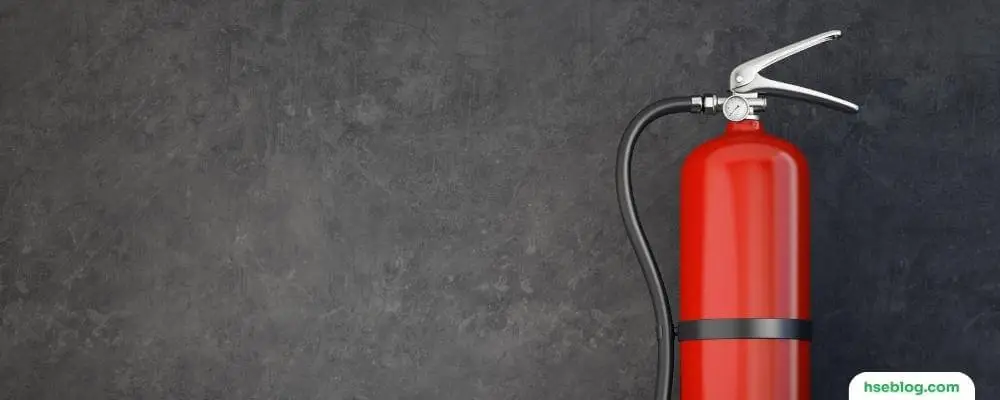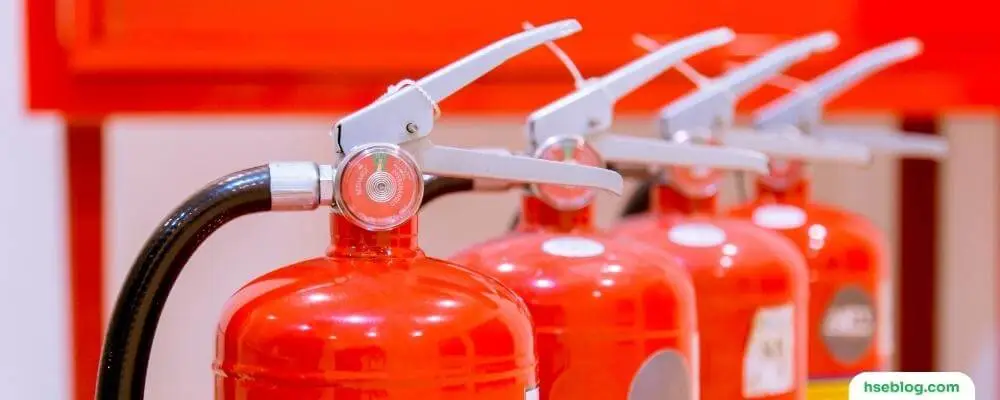Fire extinguishers are vital tools in fire safety, designed to combat and control fires in their early stages, potentially saving lives and minimizing property damage. They are widely used in residential, commercial, and industrial settings, providing a means to extinguish fires swiftly and effectively. While fire extinguishers are generally considered safe and reliable, there have been concerns and misconceptions regarding their potential to explode. This article aims to clarify the topic and dispel myths surrounding fire extinguisher explosions.
Can a Fire Extinguisher Explode?
Fire safety is paramount in any setting, whether home, workplace, or public space. Fire extinguishers are essential to fire preparedness, allowing individuals to quickly suppress fires and prevent them from escalating. However, there have been concerns and misconceptions about the potential for fire extinguishers to explode.
In this blog, we aim to address the question: Can a fire extinguisher explode? By delving into the facts, dispelling myths, and understanding the underlying factors, we will shed light on this topic and provide you with the knowledge to ensure your safety when handling fire extinguishers. So let’s explore the truth behind fire extinguisher explosions and gain a clearer understanding of the risks involved.
Understanding Fire Extinguishers:
To comprehend the possibility of fire extinguishers exploding, it is essential to have a basic understanding of their composition and operation. Fire extinguishers come in various types, including water, foam, powder, and CO2, each designed to combat specific fire classes. These extinguishers consist of a pressurized container, typically made of steel or aluminum, filled with fire suppressant agents, and propelled by compressed gas or stored pressure.
Fire Extinguisher Safety Measures:
Before delving into the possibility of explosions, it is crucial to emphasize the importance of adhering to fire extinguisher safety measures. Regular maintenance, inspection, and proper usage significantly ensure their effectiveness and minimize potential risks. Routine inspections should be conducted according to manufacturer guidelines or regulatory requirements to check for signs of damage, leakage, or other issues that may compromise the integrity of the extinguisher. Additionally, understanding the correct handling and usage procedures outlined by the manufacturer is essential for safe operation.
Exploding Fire Extinguishers: Fact or Myth?
There have been instances where fire extinguishers have exploded, but it is crucial to clarify that such occurrences are rare and often preventable. Most fire extinguishers are designed and manufactured with rigorous safety standards to minimize the risk of explosions. However, although uncommon, certain factors can contribute to the potential for an explosion.

Factors That Can Lead to Fire Extinguisher Explosions:
While explosions are infrequent, it is important to know the factors that can contribute to them. Overpressurization is a primary concern and can occur for various reasons, such as excessive heat exposure, physical damage, or improper maintenance resulting in pressure buildup beyond the extinguisher’s design limits. Corrosion, particularly in older extinguishers, can weaken the container, increasing the likelihood of rupture. Extreme temperatures, such as exposure to fire or direct sunlight, can also compromise the structural integrity of the extinguisher.
Preventive Measures and Maintenance:
Proactive maintenance is crucial in preventing fire extinguisher explosions. Regular inspections by qualified professionals help identify potential issues, such as corrosion, leakage, or damaged components, allowing for timely repairs or replacements. Pressure checks should be performed as the manufacturer recommends to ensure the extinguisher’s pressure remains within the safe range. It is essential to store fire extinguishers in designated areas away from extreme temperatures and ignition sources, following guidelines provided by regulatory authorities.
Recognizing Signs of a Potentially Dangerous Fire Extinguisher:
To ensure safety, it is vital to recognize signs indicating a fire extinguisher is compromised and at risk of exploding. Visual indicators include dents, rust, or any visible damage to the container. Auditory cues such as hissing or leaking sounds may suggest a pressurization issue. If any suspicious signs are noticed, promptly reporting them to the appropriate authorities is crucial.
Safety Tips for Dealing with a Potentially Exploding Fire Extinguisher:
In the rare event that a fire extinguisher shows signs of potential explosion, immediate action is necessary to safeguard individuals and property. Evacuate the area and contact emergency services without delay. Professionals trained in handling hazardous situations should be called upon to assess the situation and take appropriate measures to safeguard everyone involved.

At What Temperature Will A Fire Extinguisher Explode?
Fire extinguishers can potentially explode when exposed to extremely high temperatures. The specific temperature at which an explosion may occur can vary depending on factors such as the materials used to construct the fire extinguisher and its size. Generally, a fire extinguisher must be heated above 572°F (300°C) to reach a critical point where an explosion is possible.
When a fire extinguisher is subjected to such intense heat, the pressure inside the canister rises significantly. This increased pressure can cause the container to rupture and release its contents forcefully. Suppose flammable or combustible materials are present in the surrounding environment. In that case, the sudden release of the fire suppressant agent from the exploding extinguisher can ignite these materials and potentially lead to an explosion.
It’s important to note that fire extinguisher explosions are relatively rare and occur under specific circumstances. Manufacturers design fire extinguishers with safety mechanisms and materials that can withstand high pressures and temperatures to minimize the risk of explosions. However, extreme heat, prolonged exposure to fire, or physical damage to the extinguisher can weaken its structural integrity, increasing the likelihood of an explosion.
To ensure safety, handling and storing fire extinguishers according to manufacturer guidelines and relevant safety regulations is crucial. Avoid exposing them to excessive heat sources, direct sunlight, or hazardous environments that could compromise their integrity. Regular maintenance and inspections by qualified professionals are also essential to detect any signs of damage or pressure abnormalities that could indicate a potential risk of explosion.
Conclusion:
While the possibility of a fire extinguisher exploding exists, it is essential to understand that such incidents are rare and often preventable through proper maintenance, regular inspections, and adherence to safety guidelines. Fire extinguishers are designed with robust safety measures to minimize the risk of explosions. By following recommended safety practices, including routine maintenance, recognizing signs of damage or pressurization issues, and storing extinguishers appropriately, the chances of an explosion can be significantly reduced.
Fire extinguishers remain indispensable tools in fire safety, providing an immediate response to contain and extinguish fires. Their importance in safeguarding lives and property cannot be overstated. Individuals can use these devices confidently and effectively during emergencies by understanding the functioning of fire extinguishers, implementing safety measures, and dispelling myths surrounding their potential for explosions.
Remember, in the event of a potential fire extinguisher explosion or any other emergency, prioritize personal safety, evacuate the area, and contact the appropriate authorities to ensure professional assistance is provided. With proper knowledge and preparedness, we can effectively utilize fire extinguishers as reliable fire safety assets and reduce the risks associated with fire incidents.
Also Read: Emergency Fire Blanket: Essential Work Supply For Optimal Fire Safety

